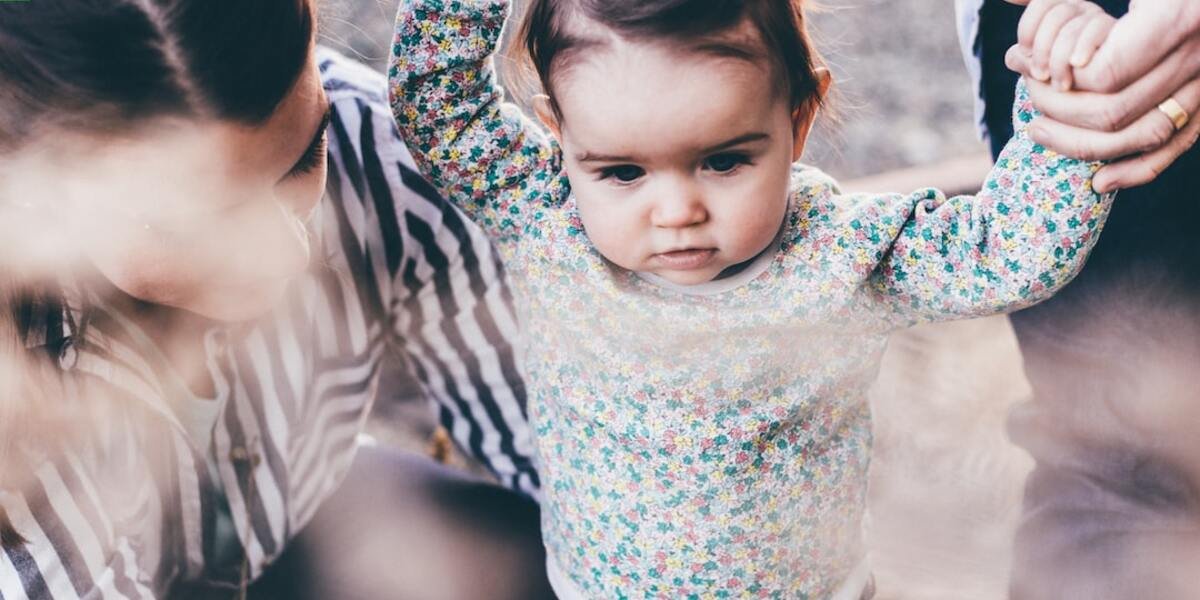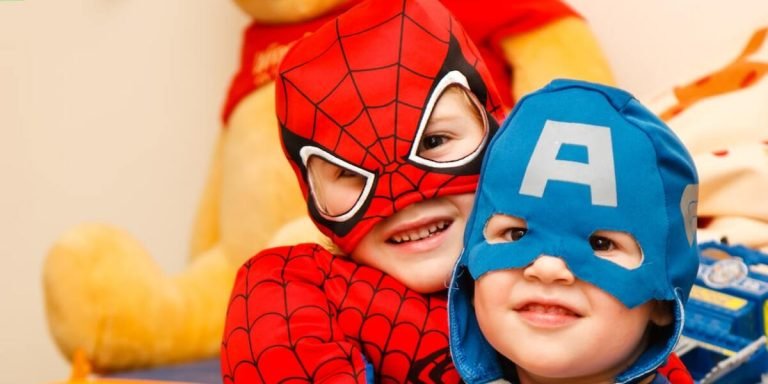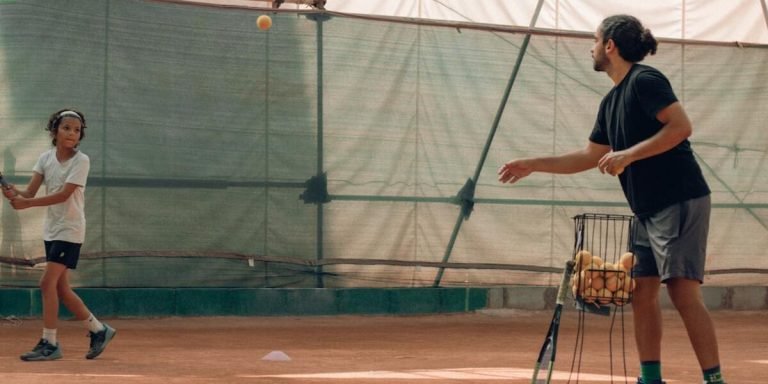Minecraft Class: A Novel Approach to Interactive Learning for Kids
In a world where technology and education are becoming increasingly intertwined, innovative learning measures such as Minecraft Class warrant our attention. The online sandbox game has evolved beyond its entertainment value; it is paving the way for interactive experience-based learning for children. By integrating this popular video game into educational settings, instructors can create an immersive digital ‘Minecraft class’ that inspires creativity, collaboration, critical thinking skills.
Embracing activity-based learning through this platform introduces students to complex concepts with ease and excitement. Leveraging their passion for the virtual environment helps convert traditional lessons into engaging activities within the dynamic landscapes of Minecraft worlds. This novel approach triggers curiosity amongst kids while enhancing knowledge retention – redefining meaningful play in contemporary classrooms.
Did you know?
Did you know that Minecraft is not just a game but also an effective educational tool? It’s used in over 40 countries to teach subjects including math, science and history.
Exploring the Benefits of Minecraft Class for Kinesthetic Learning
In recent years, education experts have increasingly recognized the value of video games as learning tools. Minecraft class has emerged at the forefront of this revolutionary approach to teaching and learning due to its immersive, interactive nature. It offers a phenomenally engaging way for children to absorb information while developing essential life skills.
What makes Minecraft particularly suited for kinesthetic learners – students who learn best through physical activity rather than traditional lecture-based methods? The answer lies in its design that encourages hands-on interaction with an open world environment; thereby appealing directly to these kinetic thinkers. Children are not just passively consuming content but actively manipulating their surroundings: building structures, solving problems, creating their own narratives – all inspired by their imagination.
Integrating technology like Minecraft classes into childhood education:
- Promotes activity-based learning
- Enhances student engagement and comprehension
- Provides a flexible digital space for students to explore concepts at their own pace
- Encourages trial-and-error learning without fear of failure or peer judgment
- Transforms the classroom into a virtual playground with endless educational opportunities
- Facilitates fun-fueled, discovery-led knowledge acquisition through game-like experiences and meaningful tasks
Advantages of Virtual Environments in Hands-On Education
Firstly, these immersive digital spaces provide an engaging and interactive platform for students. A Minecraft class enables learners to dive headfirst into projects and lessons—constructing buildings, designing landscapes or even creating complex electrical circuits using redstone blocks—in real-time and three-dimensional space.
Secondly, a noteworthy feature is adaptability where educators can tailor activities according to individual student needs. The personalized teaching approach encourages active participation from all children regardless of their abilities or skill levels.
In addition, this dynamic medium facilitates collaboration amongst peers fostering essential soft skills like teamwork and cooperation at an earlier age itself through group builds or challenges issued within gaming sessions.
The fourth compelling advantage lies in its potential for cross-disciplinary integration. From practicing arithmetic while calculating resources needed for construction tasks- it combines mathematics with creativity; history by recreating ancient civilizations–it spans across traditional subject boundaries thereby making each lesson more holistic yet enjoyable.
Enhancing Motor Skills Through Interactive Gameplay
Engaging children in learning with an integrated approach using technology has proven to be highly successful. Particularly, the inclusion of video games like Minecraft takes activity-based learning to another level.
The Minecraft class presents a unique opportunity for kinesthetic learners who learn best through hands-on experiences. As these young minds get engrossed in interactive gameplay, they inadvertently develop their motor skills and cognitive abilities.
Firstly, it’s crucial we understand how this happens; when playing Minecraft, kids not only navigate virtual landscapes but also build complex structures by clicking and moving objects around on the screen. This encourages fine-motor skill development as both hand-eye coordination and spatial awareness improve significantly over time.
Secondly, working within three-dimensional spaces hones visual-spatial skills that are essential for everyday tasks such as reading maps or assembling furniture later in life! These activities require players to envision geometric relationships between different pieces – a fundamental aspect of mathematics education which can now become something practical rather than abstract theoretical concepts learned at school desks.
Moreover, being able to manipulate various elements within the game fosters creative problem-solving skills. They have options—whether constructing bridges across lava pits or building shelters against night-time monsters—and must decide what materials would work best given each scenario’s specific constraints.
Integrating Minecraft into Curriculum Design for Active Learning
Integrating Minecraft, a popular video game with educational potential, into curriculum design has created quite a buzz in the education sector. The innovative approach of using this well-loved game as an effective learning tool marks a significant shift from traditional teaching methods to more interactive and engaging forms of instruction.
Moreover, tailoring lessons around Minecraft fosters activity-based learning; it becomes less about memorization and more about applying concepts creatively within the virtual world. By allowing kids to learn by doing inside their favorite digital sandbox environment helps them better grasp complex topics compared to conventional classroom strategies.
By embracing tools like Minecraft in education today we not only keep pace with technological advancements but also ensure our pedagogical practices resonates with our tech-savvy Gen Z pupils – making sure they’re always actively engaged in the process of learning.
Crafting Custom Educational Experiences within Minecraft
Harnessing the popularity of Minecraft, educators can design unique educational experiences tailored to students’ needs and interests. Incorporating this versatile gaming platform into curriculum opens up a world of possibilities for active learning.
Firstly, using minecraft in class allows teachers to create immersive digital environments that mimic real-world scenarios or historical events. Students might reconstruct ancient civilizations from scratch or simulate how ecological systems function over time under specific circumstances—bringing abstract concepts tangibly alive!
Furthermore, Minecraft’s building block nature inherently fosters creativity. Given access to an array of virtual materials and tools, learners set their imagination loose as they construct intricate models representing scientific theories or mathematical principles—an engaging way for them to comprehend complex topics.
A remarkable attribute about integrating Minecraft into education is its potential for collaborative activities. It enables multiple players within the same spatial realm permitting collective projects promoting teamwork skills among students—be it assembling architectural wonders till completion together mirroring professional collaborations much later in life!
Aligning Game Mechanics with Educational Standards and Goals
As we dive deeper into the digital age, integrating technology like Minecraft into education has become pivotal for active learning. The block-building game is more than just a fun-filled experience; it’s an interactive platform that can align perfectly with educational standards and goals in our minecraft class.
Minecraft allows students to explore concepts through playing and building; however, its usefulness goes way beyond engaging reluctant learners. A critical aspect of utilizing this resource effectively involves aligning the game mechanics with your curriculum objectives.
Firstly, educators need to understand how Minecraft works. Its creative mode lets players build structures using blocks – similar to online LEGO bricks but far more versatile! This open-ended approach encourages creativity while simultaneously promoting problem-solving skills as children work out structural solutions on their own initiative.
Next step: connect this gameplay directly to educational standards such as Common Core or Next Generation Science Standards (NGSS). For instance, building bridges based on physics principles or recreating historical sites providing insight into architecture across periods connecting directly onto subjects like science and social studies respectively.
In addition, ensure lesson activities are structured around specific goals aligned with learner needs ensuring progress tracking becomes simplified whilst retaining student engagement levels intact. Introducing challenges related tasks meeting curricular demands not only promotes skill acquisition but raises motivation resulting in improved outcome retention rates ultimately achieving defined targets within timelines set upfront thus proving beneficial enhancing overall academic performances over time scales involved hereunder.
Assessing Cognitive Development through Minecraft-Based Projects
In the modern landscape of learning, incorporating technology has become a mainstream practice. With e-learning platforms like Minecraft, educators have found interactive and engaging ways to foster cognitive development in children. The game’s immersive environment encourages creativity while offering an opportunity for teachers to assess their students’ progress.
Minecraft-based projects pave the way for activity-based learning where kids don’t just passively acquire knowledge but actively construct it. By creating virtual worlds with this “digital Lego”, they apply mathematical concepts, problem-solving strategies, and critical thinking skills organically as part of gameplay- giving educators tangible metrics to track cognitive growth.
Moreover, these Minecraft classes serve as social spaces where collaborative efforts are needed – employing communication skills and emotional intelligence among peers apart from enhancing technical proficiency. In conclusion, integrating such innovative technologies into our education system is undoubtedly revolutionizing how we gauge student performance by bridging playtime fun with effective academic enrichment.
Tracking Progress and Milestones Within Game-Based Tasks
As a parent or educator, it can be challenging to assess cognitive development in traditional learning contexts. However, observe your child or students engaging with Minecraft class and you’ll spot numerous opportunities for skill-building and mental growth. This game-based task serves as an exciting stage for youngsters to show their creativity, problem-solving skills, teamwork abilities and much more.
Minecraft isn’t just a popular video game, it also serves as an unconventional education tool that promotes activity-based learning. Here’s how this digital playground facilitates progress tracking:
Community building projects often demand resource management at various levels which require critical thinking capabilities -a vital sign of cognitive advancement.
The geometrical structures involved demands the application of mathematical ideas like area calculation & volume computation quite intuitively.
In multiplayer mode when learners team up on tasks they exhibit socialization skills by strategizing together showing signs of empathy & understanding from different perspectives –showcase emotional intelligence milestones!
Whether constructing intricate castles outlying blueprints before they build showcases creative planning–revealing mental maturity strides.
The reproduction historical landmarks recreated digitally indicates comprehensive understanding thereby demonstrating intellectual proficiency!
Fostering Problem-Solving Abilities in a Block-Building Context
In this digital era, incorporating video games such as Minecraft in classrooms or at home is an insightful approach to fostering problem-solving abilities among children. The unique aspects of a minecraft class deliver activity-based learning that encourages imagination and creativity while facilitating cognitive development.
One significant benefit of using Minecraft for teaching is its inherent aspect of problem solving. Each session poses unique challenges, pushing kids to think out-of-the-box and develop dynamic solutions. For instance, students may need to construct a building with limited resources within the game setting which mirrors real-world scenarios thereby offering practical lessons on resource management.
Another captivating feature is the immersive environment provided by Minecraft. This promotes creativity as children navigate through multi-dimensional landscapes filled with diverse elements – all built from blocks! They can experiment endlessly making it conducive for experiential learning; every decision made has immediate consequences further imprinting their understanding about cause-and-effect relationship.
Moreover, collaboration plays an essential role in any successful minecraft class scenario where they work together on projects helping them enhance teamwork skills while also driving them towards common goals – another crucial life skill being seamlessly integrated into these classes.
Lastly but importantly too – fun-factor should not be overlooked! As education evolves gradually integrating technology efficiently along with traditional methods , we are stepping away from strictly textbook based approaches moving towards more engaging platforms like gaming greatly enhancing overall interest levels amongst learners ultimately leading better attention span hence improved result outcomes realized over time .
Conclusion
In conclusion, a Minecraft class can be an effective and exciting avenue for interactive learning. As we’ve seen through various examples noted above, children not only pick up crucial skills but the game also ignites their creativity and problem-solving abilities while they are immersed in creating their virtual world. Indeed, nurturing our kids with this novel approach lets them learn and explore concepts far beyond textbooks.
Now that you’re armed with this fresh perspective on childhood education, we encourage you to look around our website more! From parenting tips to educator resources and innovative learning methods like the Minecraft class – there’s plenty left unexplored yet incredibly vital information that could help steer your child’s educational journey effectively. Keep browsing to keep abreast of ways to make education both fun-filled and knowledge-rich!







